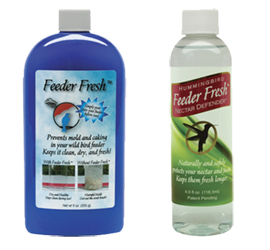View all of the titles in the
NatureSmart Bookstore

by Stan Tekiela
© NatureSmart
July 24, 2023
In my last column, I posed a question that went something like this, “when is a duck not a duck”. The answer is when it is a merganser. Then I wrote about the Common Merganser, which is a member of the duck family but doesn’t look or act like a duck. In this column I would like to look at another merganser that has moved through the states this spring on their way up into Canada and Alaska. It is the Red-breasted Merganser (Mergus serrator).
The Red-breasted Merganser is found all around the world in the Northern Hemisphere. In spring, it is an early migrant that follows the melting ice on northern lakes as it hop-scotches up North America on its way to Northern Canada and Alaska where it will nest.
The male Red-breasted Merganser is a large bird measuring just over 2 feet long from tip of bill to tail and a wingspan of 3 feet. Males are upwards of 3 pounds. Females are smaller and lighter. Males have a dull green head with raggedy feathers sticking out from the back of his large head. It has a white neck ring and as its name implies, a red breast.
Females look remarkably similar to female Common Mergansers, with a reddish head and gray body. Both male and female have long narrow orange bills with a serrated or saw-toothed edge. In fact, their species name “serrator” is Latin for sawyer, ultimately meaning saw-like and is referring to the edge of its bill.
This is another species of duck that must swim extremely fast underwater in order to catch small fish. They use their serrated bill to hold onto the slippery prey. Their legs and feet are located on the backside of the body. Their feet are large and webbed allowing them to paddle with great force, propelling them through the water very quickly. They don’t use their wings underwater and keep the wings close to their bodies when swimming. Because their legs are so far back, they don’t walk very well on land.
In addition to swimming quickly underwater, they are also very fast flyers. Just like the Common Merganser, the Red-breasted Merganser is quick on the wing. They can reach 80 mph in straight level flight. A lot of birds can reach these kinds of speeds but that is usually when diving down from high heights. These birds can do it on flat and level flight. The Common Merganser is also one of the fastest flying birds reaching similar speeds as the Red-breasted Merganser. According to a couple reports I’ve read, the Red-breasted Merganser has attained airspeed of 100 mph while being chased by an airplane. I am not sure how that works out but it’s an interesting note.
Unlike many of the other merganser species which nest in cavities, the Red-breasted Merganser nests on the ground in sheltered places, and near rivers. The female makes a depression on the ground forming a shallow bowl. She fills this with down feathers plucked from her breast to help keep the eggs warm. Unlike other species of birds, the Red-breasted Merganser doesn’t defend a territory and tends to be social year-round. In the non-breeding season, groups of over 100 individuals occur regularly on freshwater lakes and large rivers.
Recently this spring, hundreds of Red-breasted Mergansers were migrating through the area near my house which allowed me to get out and capture a few fun and interesting images of these amazing fish-eating ducks. The males were constantly displaying for the females. The males shake their heads from side to side to get the females attention, then he suddenly lifts his head high, arches his back and then tips forward until his rear-end is up and out of the water. It reminds me of a rocking horse in action. If she likes him, she will poke him with her bill. After she is done laying all of the eggs, the male abandons her, as do all duck species, and she is on her own to incubate the eggs and raise the young.
Populations of the Red-breasted Merganser are stable for now according to the North American Breeding Bird Survey with only a modest decline in populations since the 1960’s. This is definitely a species worth going out to see in early spring and late in summer when they are migrating through our areas. I hope you get a chance to see these cool birds. Until next time…
Stan Tekiela is an author / naturalist and wildlife photographer who travels the U.S. to study and capture images of wildlife. He can be followed on www.instagram.com and www.facebook.com. He can be contacted via his website at www.naturesmart.com.
The nationally syndicated NatureSmart Column appears in over 25 cities spanning 7 states: Minnesota, Wisconsin, Michigan, Illinois, Ohio, New York and Pennsylvania. It is a bi-weekly column circulated to over 750,000 readers.
Horned Lark
The overall population of ground nesting birds is steadily going down. Here in North America, we have hundreds of bird species who nest directly on the ground. Prairie birds such as Eastern and Western Meadowlarks are a good example. If you are older than 50 you most likely remember hearing...
Sharp-tailed Grouse
The rights of spring come in many different forms, shapes, colors, and patterns. But the end goal is always exactly the same—reproduction. In nature, everything can be boiled down to one of two things, finding food to survive and mating for reproduction. It’s as simple as...
Greater Prairie Chicken
I am not a stranger to getting up at O’ dark thirty, to be able to get out and capture some images of wildlife. Over the past 40 years I would say it is definitely in the hundreds if not thousands of times I’ve dragged myself out of bed so early. So, last week when the alarm went off...
Marsh Rabbit
For me, I enjoy all aspects of nature, not just birds. I find all of nature fascinating and that is what keeps me interested. So, while leading a photo tour to Florida recently I was so excited to see a crazy cool critter that isn’t what you expect when you see it. A true rule...
Each year, during June and July, Stan Tekiela offers two world-class wildlife photography tours. Here's your chance to learn some tricks of the trade from a top professional.
View all of the titles in the
NatureSmart Bookstore
Check out Stan's latest photos at
NatureSmart Wildlife Images
Do you have any interesting wildlife in your backyard? Any nesting birds, deer, turkeys, reptiles, amphibians, or other unique wildlife? Or maybe a fox or coyote den?
If so, contact Stan at stan@naturesmart.com with your backyard wildlife. If he can get a good photo of the subject, he will send you a print of the photo to hang on your wall.
Order Prints and posters of Stan's photos at
» Prints & Posters
Hear Stan on radio stations all across the Midwest.
» More Info

When he's out in the field, Stan relies on his Vortex Razor binoculars and Vortex Razor spotting scope to help find the subjects for his award winning wildlife photography.

For thirty years, professional wildlife photographer Stan Tekiela has counted on Hunt's Photo and Video to provide him with professional photography equipment.
From tripods to camera bodies and lenses, Hunt's has been Stan's place for everything that he needs. Personal service and prompt shipping means Stan can count on Hunt's to support his professional wildlife photography career.


Professional Wildlife Photographer Stan Tekiela always uses Feeder Fresh in his seed feeders to help keep the feeders and food dry, clean and mold free.
He also uses Feeder Fresh Nectar Defender in all of his hummingbird feeders. It safely keeps nectar fresh longer.